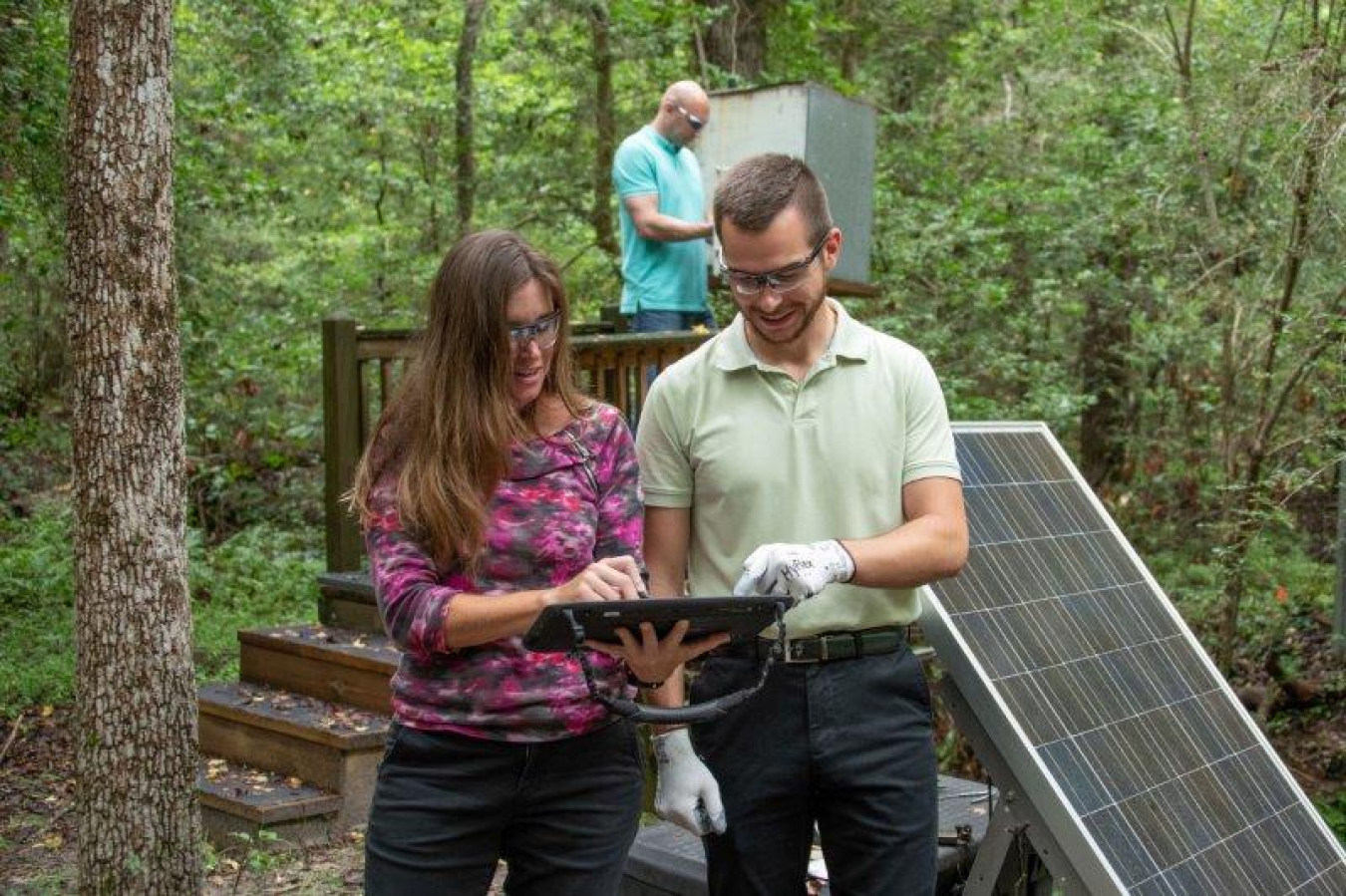The Savannah River Site’s (SRS) Environmental Monitoring Program has become the framework for a new nationally applied nuclear industry standard.
Office of Environmental Management
July 12, 2022
A newly formed American Nuclear Society committee, under the leadership of Savannah River Nuclear Solution's (SRNS) Teresa Eddy, is using the Savannah River Site’s (SRS) Environmental Monitoring Program (EMP) as a model to develop a standard for environmental radiological monitoring at nuclear facilities. Eddy, manager of the SRS Environmental Bioassay Laboratory and EMP, is shown working in the field with Jesse Baxley (right), SRNS environmental monitoring lead, and Eric Doman, SRNS EMP Manager.
AIKEN, S.C. – The Savannah River Site’s (SRS) Environmental Monitoring Program has become the framework for a new nationally applied nuclear industry standard.
Teresa Eddy, manager of the environmental monitoring program for SRS contractor Savannah River Nuclear Solutions (SRNS), leads a diverse group of industry professionals on the American Nuclear Society’s (ANS) Environmental and Siting Consensus Committee.
The committee is using the success of the SRS Environmental Monitoring Program as the basis for the development of the new ANS standard. The SRS program detects and identifies the effects of site operations on the local environment.
The ANS criteria uses performance-based requirements to develop and implement an integrated radiological environmental monitoring program that focuses on ambient air, surface water, groundwater, soil and animal and plant life.
The standards will apply to nuclear power plants, nuclear medicine hospitals, fuel fabrication facilities, fuel reprocessing facilities, radioactive waste disposal facilities, industrial and research facilities handling nuclear waste, DOE, the Nuclear Regulatory Commission, state regulatory agencies and consultants in the nuclear industry.
As chairperson, Eddy ensures the committee represents and engages with nuclear facilities across the United States. Eddy, who has served on the committee for four years, is working with two colleagues from SRS – Brittany Owensby (SRNS) and Brooke Stagich (Savannah River National Laboratory) – along with leaders representing ANS, DOE, Lawrence Berkeley National Laboratory, the Nuclear Energy Institute, Duke Energy, the University of Kansas, Nuclear Regulatory Commission and the Southern Company, and others. Eddy recently nominated Stagich to co-chair the committee, and ANS subsequently appointed her.
“Working with other organizations that are using nuclear materials ensures a safe collective impact on the environment and community. Radiological environmental monitoring programs and the ANS standard will secure continued success towards meeting and exceeding our goals here and potentially throughout the nation,” Eddy said.
“Both DOE Savannah River Operations Office and SRNS place a strong emphasis and high priority on efficient and effective environmental monitoring programs for both radiological and chemical constituents. We also believe it’s important to share the proven methods and technology used and continually strive to perfect,” she added.
Since its start, ANS has written and approved nearly 150 different standards and multiple versions of these standards. At present, ANS has more than 80 standards that are current American national standards and many others that are considered historical standards.
To receive the latest news and updates about the Office of Environmental Management, submit your e-mail address.

